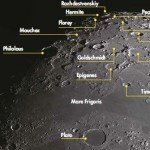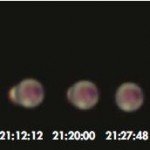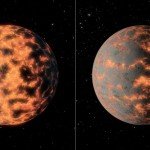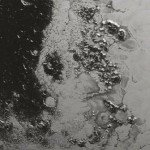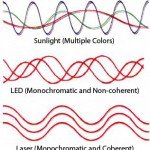What is inside the Moon ?
The Moon used to be thought of as a cold, dead world, but with NASA’s Apollo programme we got tantalising hints that this assumption did not reflect reality. The astronauts on those missions left mirrors on the lunar surface, which scientists on Earth bounced lasers off to precisely measure the distance, plus seismometers to record moonquakes. And although the data from these experiments was not very well distributed, because the spacecraft only landed in a few areas around the lunar equator, it quickly became clear that the Moon had some structure – that it wasn’t simply hard rock all the way through. The suggestion was that there might be a core to the Moon, and then a softer, hot layer between that and the base of the rocky mantle.
The Moon wobbles a bit as it rotates on its orbit around the Earth, an effect called libration. The laser measurements that the Apollo mission made possible have gauged this effect precisely, giving scientists a great deal of information about the Moon’s rotation. This showed that there was something within the Moon other than just solid rock. It’s a bit like spinning a hard-boiled egg and a raw egg: a boiled egg spins neatly and uniformly, while a raw egg has a different sort of wobble and motion because of the liquid inside it.
Getting under the skin
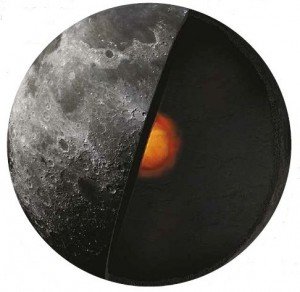 Both the seismology experiments and the laser test showed that the Moon’s behaviour could not be explained by the then current models of its interior. We were able to examine this more closely using data sent back in recent years from Japan’s SELENE mission and China’s Chang’e-1 mission, which both orbited the Moon. We started testing various models of the interior of the Moon to find out which of them best matched the results from those probes and the Apollo experiments. The results show us what it is like deep beneath the lunar surface. They confirmed that the Moon does indeed have a core. We expect that the core itself will be partly liquid, with a part-solid inner core, but we do not yet fully understand its form. Around the core, and very deep beneath the mantle, is a hot layer which is very much softer in terms of its viscosity – like a syrup of partly molten stone – which controls the way the Moon rotates. We simulated this layer for various thicknesses, taking into account what scientists have discovered using seismology, and our results suggest it is about 150km deep. Above that, the results tell us, is solid rock.
Both the seismology experiments and the laser test showed that the Moon’s behaviour could not be explained by the then current models of its interior. We were able to examine this more closely using data sent back in recent years from Japan’s SELENE mission and China’s Chang’e-1 mission, which both orbited the Moon. We started testing various models of the interior of the Moon to find out which of them best matched the results from those probes and the Apollo experiments. The results show us what it is like deep beneath the lunar surface. They confirmed that the Moon does indeed have a core. We expect that the core itself will be partly liquid, with a part-solid inner core, but we do not yet fully understand its form. Around the core, and very deep beneath the mantle, is a hot layer which is very much softer in terms of its viscosity – like a syrup of partly molten stone – which controls the way the Moon rotates. We simulated this layer for various thicknesses, taking into account what scientists have discovered using seismology, and our results suggest it is about 150km deep. Above that, the results tell us, is solid rock.
Core issues
Now, it is all very well to be able to find this explanation for the measurements that were made, but if you invoke this soft layer around the core, then you also have to explain how it can maintain its hot, soft nature over lunar history. You might imagine that the lunar interior would have solidified eventually, because there was not enough heat to keep it partly molten – and that is indeed one of the big issues. But we now think the situation is similar to what occurs with Jupiter’s innermost main moon Io, where it is driven by tidal forces and is kept liquid inside because of the gas giant’s powerful gravitational pull.
A similar mechanism seems to be working with our Moon, which would solidify inside were it not for the pull of the Earth. These tidal forces keep this layer in a state of constant friction, so that it remains partly liquid. We are now working to improve our model using data from a pair of NASA probes called GRAIL, which orbited the Moon during 2012 to produce a very detailed map of its gravitational field before being crashed onto the surface. That should help us get a better understanding of what lies beneath the lunar surface. (Source :BBC Sky at Night)
ABOUT SANDER GOOSSENS
 Dr Sander Goossens is an assistant research scientist at NASA Goddard Space Flight Center’s Planetary Geodynamics Laboratory, where his work involves trying to get under the skin of Earth’s closest neighbour.
Dr Sander Goossens is an assistant research scientist at NASA Goddard Space Flight Center’s Planetary Geodynamics Laboratory, where his work involves trying to get under the skin of Earth’s closest neighbour.

